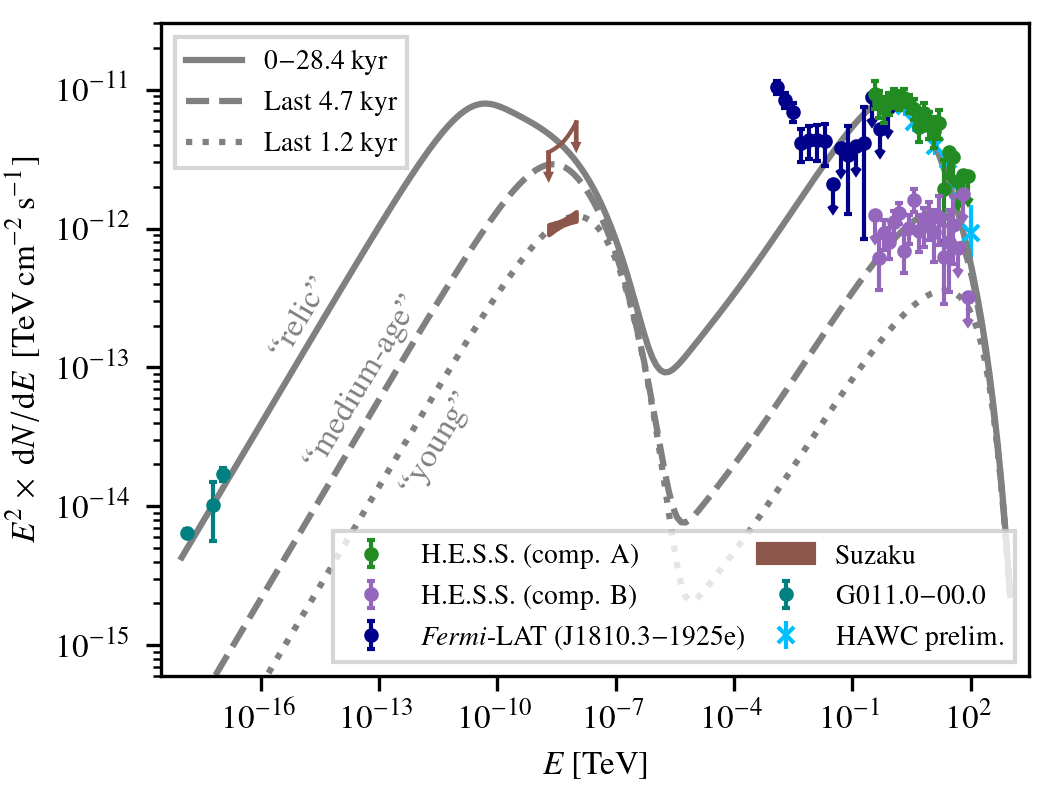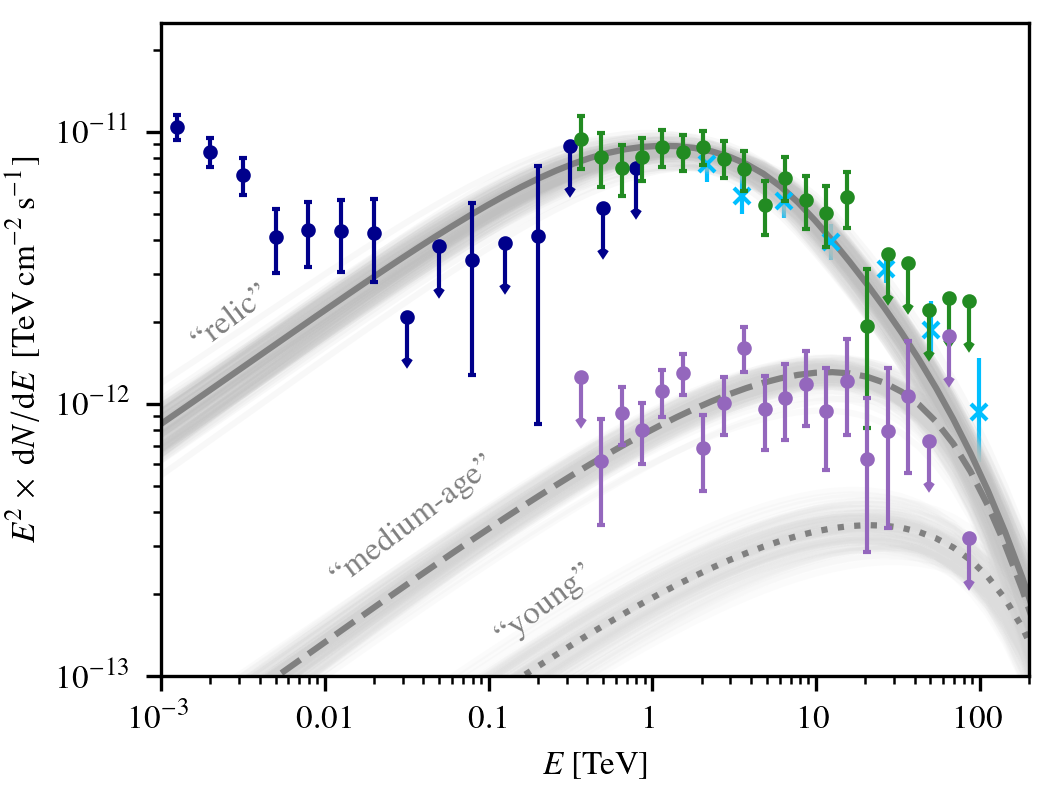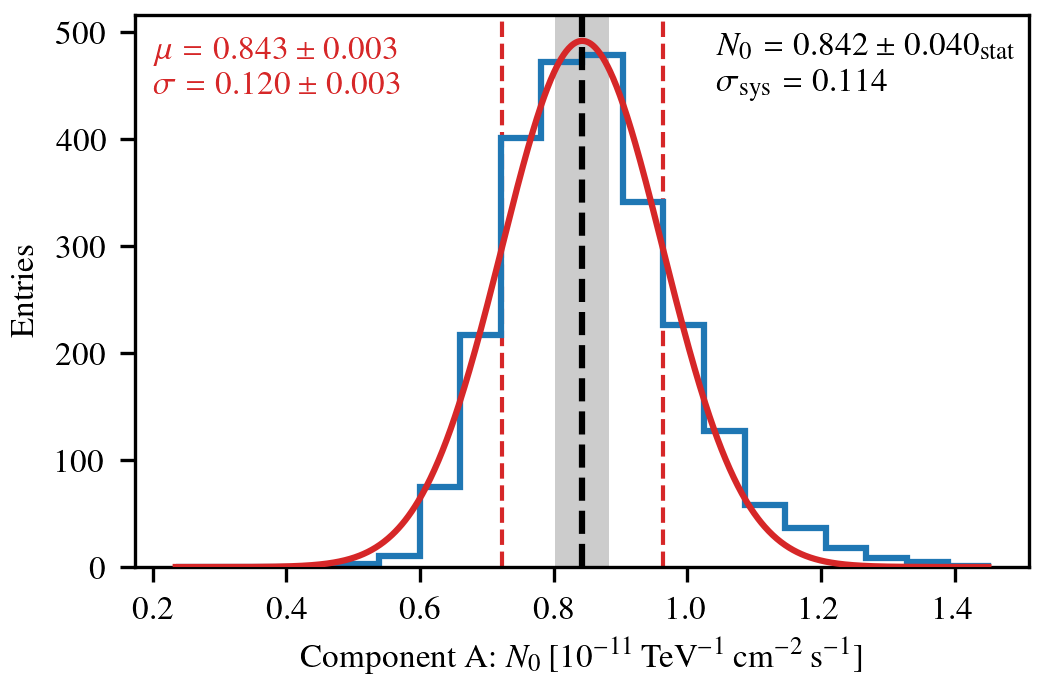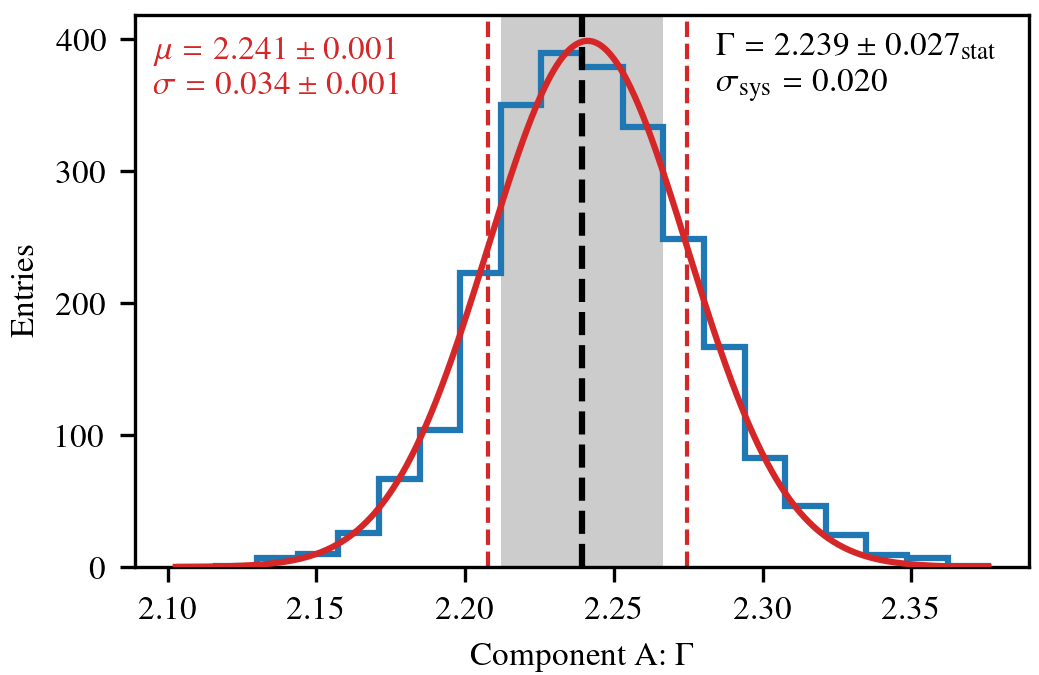Auxiliary information for "HESS J1809–193: A halo of escaped electrons around a pulsar wind nebula?" (Astronomy & Astrophysics, 2023)
Link to the paper: https://doi.org/10.1051/0004-6361/202245459
Figure 1
Significance maps with best-fit models
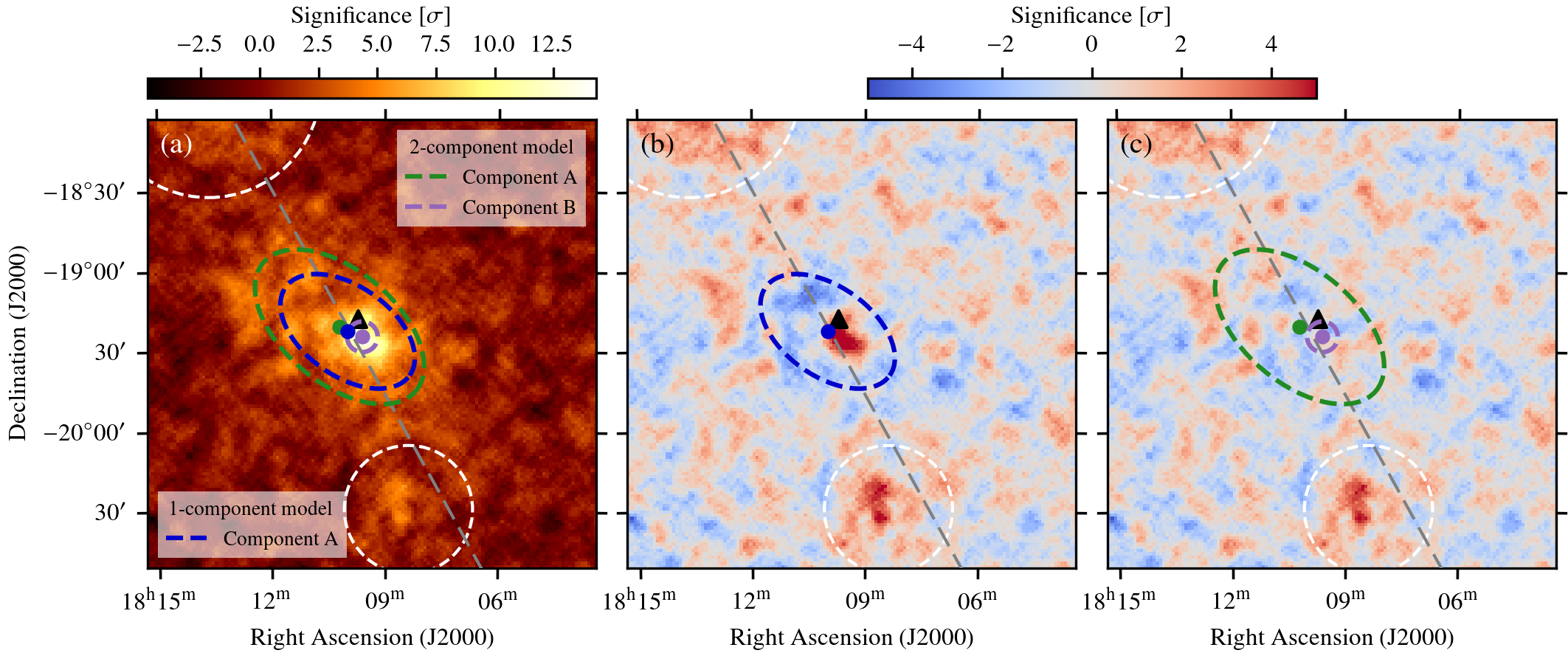
[PDF]
[FITS (a)]
[FITS (b)]
[FITS (c)]
Figure 2
Flux maps
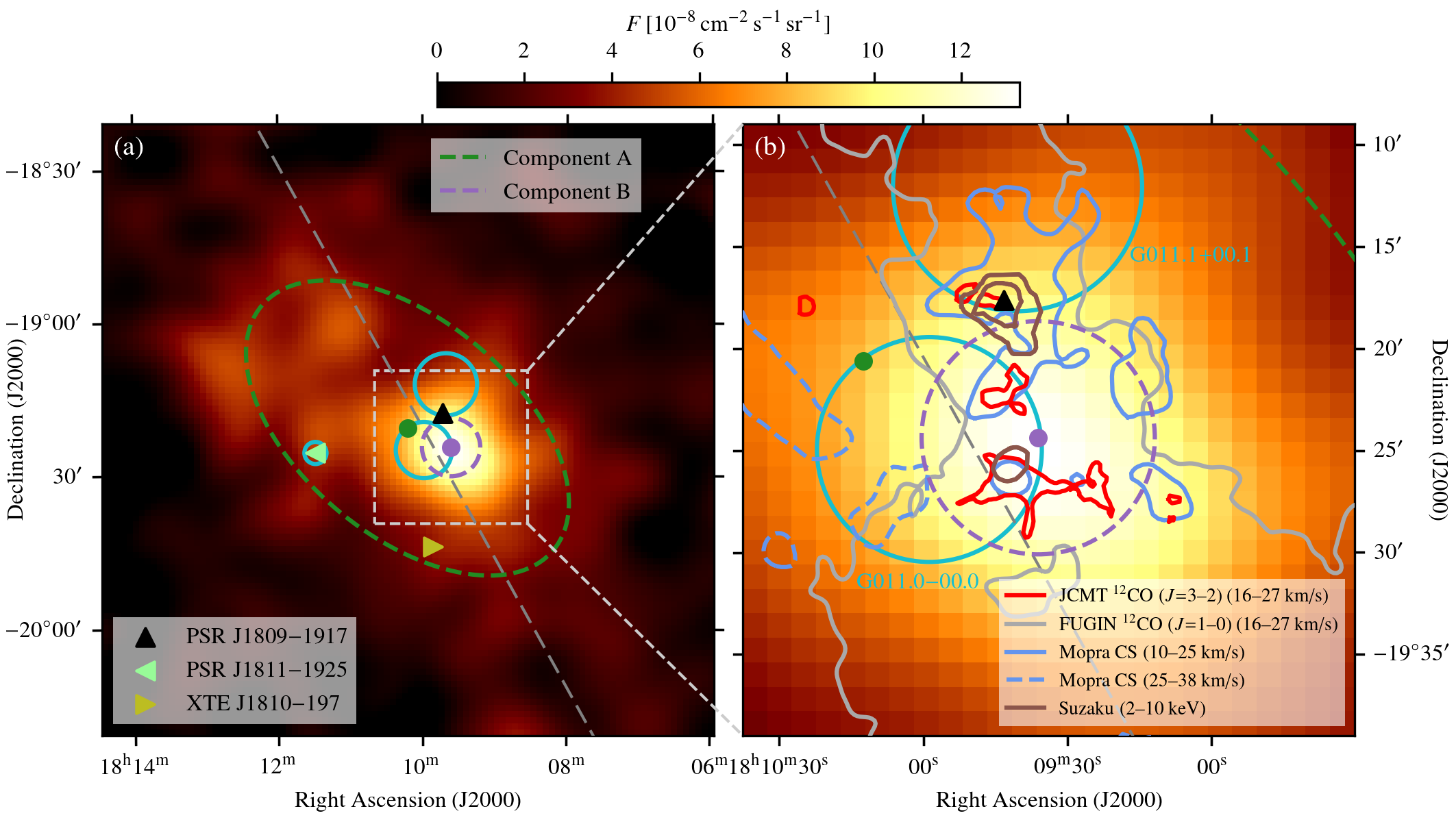
[PDF]
[FITS (a)]
[FITS (b)]
Figure 3
Significance distributions
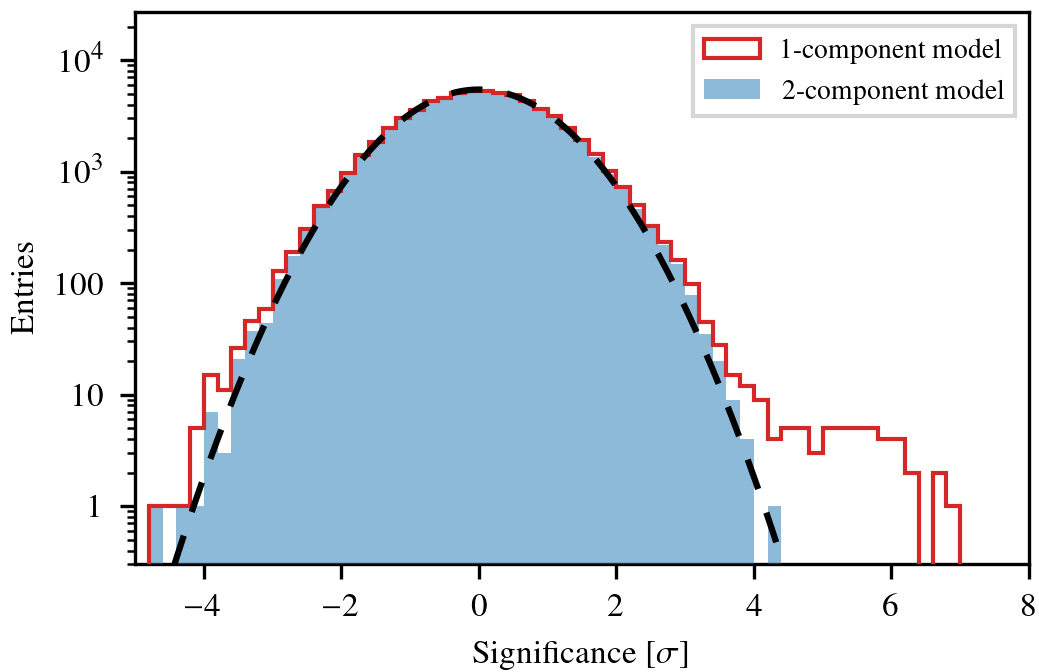
[PDF]
Figure 4
H.E.S.S. energy spectrum results
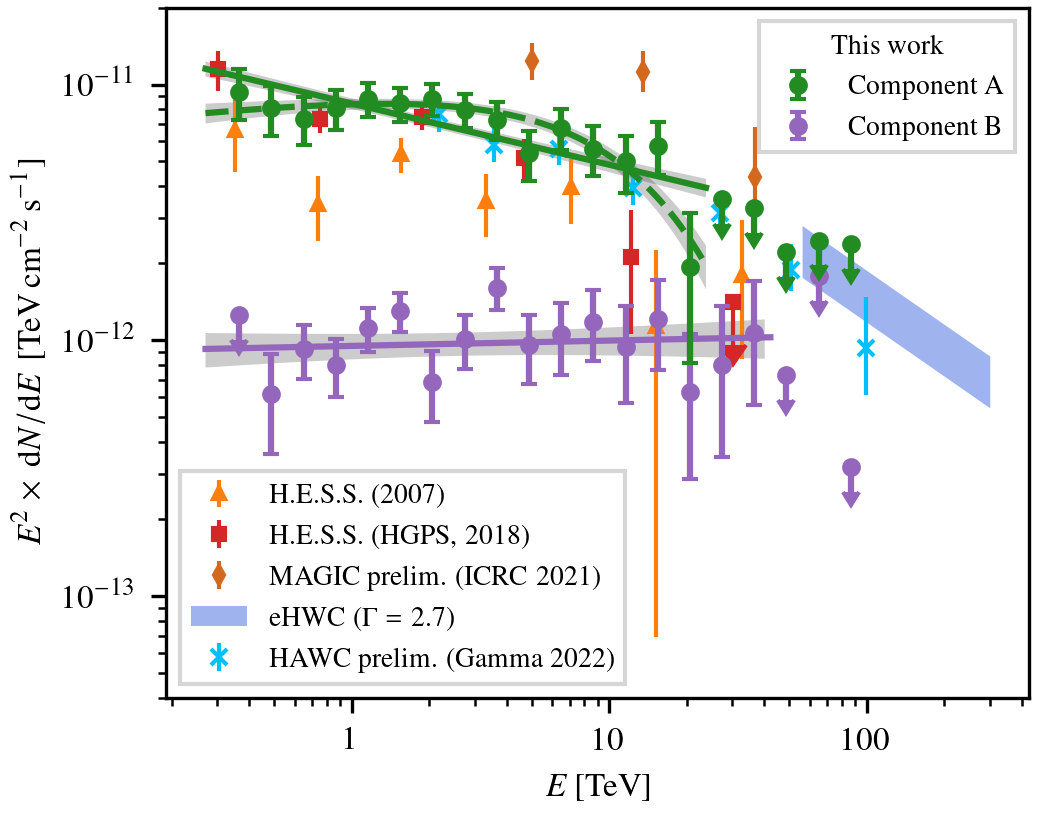
[PDF]
Flux points: (Errors contain statistical uncertainties and systematic uncertainties, see paper for details. Upper limits are at 95% confidence level.)
ATTENTION: by mistake, the flux values in the table below were given in units of erg cm-2 s-1 instead of TeV cm-2 s-1.
This has been corrected on February 21, 2024.
| |
Component A |
Component A |
Component B |
Component B |
| Energy [TeV] |
Energy Flux [TeV cm-2 s-1] |
Energy Flux Error [TeV cm-2 s-1] |
Energy Flux [TeV cm-2 s-1] |
Energy Flux Error [TeV cm-2 s-1] |
| 0.365 |
9.38e-12 |
2.09e-12 |
< 1.25e-12 |
|
| 0.487 |
8.06e-12 |
1.79e-12 |
6.15e-13 |
2.61e-13 |
| 0.649 |
7.36e-12 |
1.57e-12 |
9.22e-13 |
2.23e-13 |
| 0.866 |
8.06e-12 |
1.44e-12 |
8.02e-13 |
2.05e-13 |
| 1.15 |
8.79e-12 |
1.36e-12 |
1.11e-12 |
2.2e-13 |
| 1.54 |
8.43e-12 |
1.29e-12 |
1.3e-12 |
2.23e-13 |
| 2.05 |
8.78e-12 |
1.25e-12 |
6.89e-13 |
2.14e-13 |
| 2.74 |
7.97e-12 |
1.24e-12 |
1.01e-12 |
2.44e-13 |
| 3.65 |
7.27e-12 |
1.23e-12 |
1.61e-12 |
3.06e-13 |
| 4.87 |
5.38e-12 |
1.2e-12 |
9.57e-13 |
2.92e-13 |
| 6.49 |
6.78e-12 |
1.26e-12 |
1.05e-12 |
3.34e-13 |
| 8.66 |
5.61e-12 |
1.23e-12 |
1.18e-12 |
3.69e-13 |
| 11.5 |
5.01e-12 |
1.27e-12 |
9.4e-13 |
3.94e-13 |
| 15.4 |
5.74e-12 |
1.35e-12 |
1.22e-12 |
4.79e-13 |
| 20.5 |
1.93e-12 |
1.16e-12 |
6.29e-13 |
3.82e-13 |
| 27.4 |
< 3.56e-12 |
|
7.98e-13 |
5.02e-13 |
| 36.5 |
< 3.29e-12 |
|
1.06e-12 |
5.73e-13 |
| 48.7 |
< 2.21e-12 |
|
< 7.29e-13 |
|
| 64.9 |
< 2.45e-12 |
|
< 1.78e-12 |
|
| 86.6 |
< 2.38e-12 |
|
< 3.2e-13 |
|
Figure 5
Significance maps for Fermi-LAT analysis.
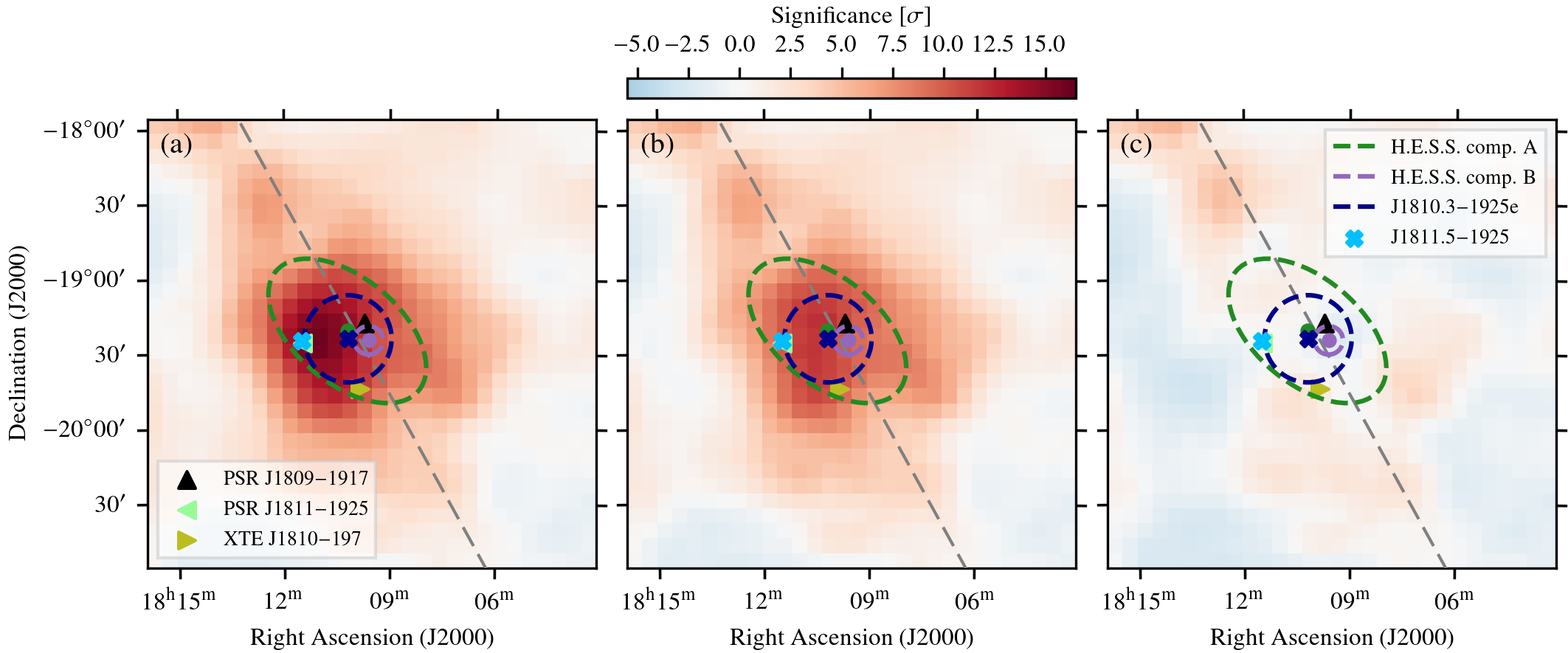
[PDF]
[FITS (a)]
[FITS (b)]
[FITS (c)]
Figure 6
Fermi-LAT energy spectrum results.
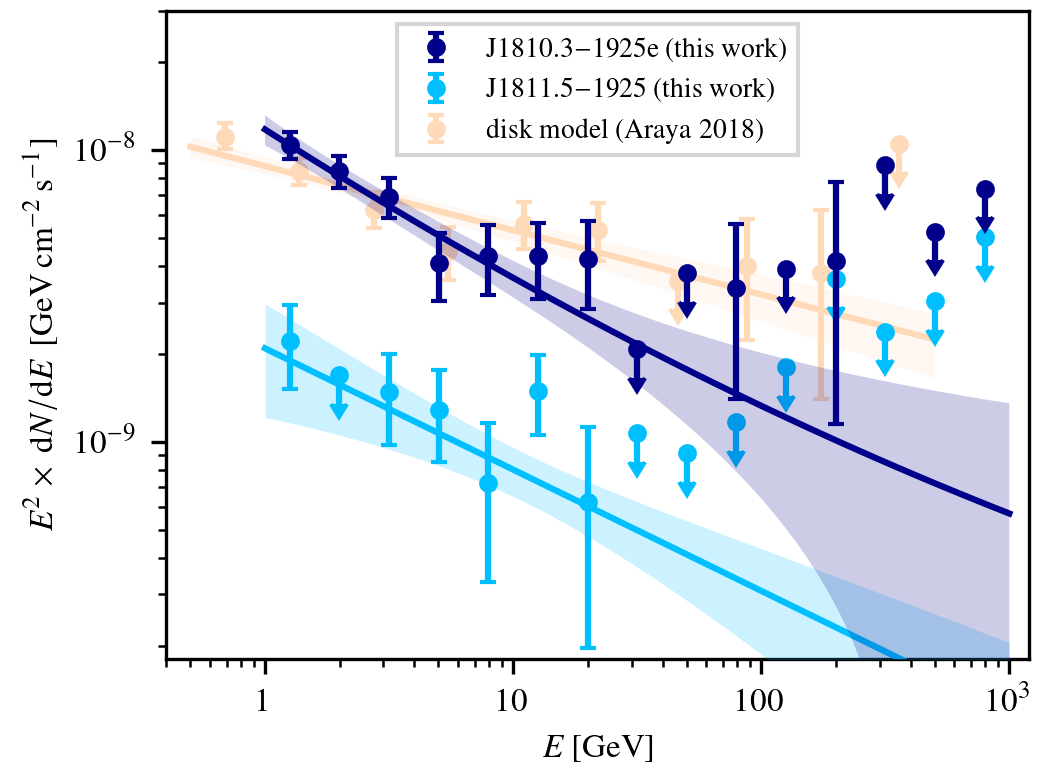
[PDF]
Flux points: (Errors contain statistical uncertainties and systematic uncertainties, see paper for details. Upper limits are at 95% confidence level.)
| |
J1810.3-1925e |
J1810.3-1925e |
J1810.3-1925e |
J1811.5-1925 |
J1811.5-1925 |
J1811.5-1925 |
| Energy [GeV] |
Energy Flux [GeV cm-2 s-1] |
Energy Flux Error Low [GeV cm-2 s-1] |
Energy Flux Error High [GeV cm-2 s-1] |
Energy Flux [GeV cm-2 s-1] |
Energy Flux Error Low [GeV cm-2 s-1] |
Energy Flux Error High [GeV cm-2 s-1] |
| 1.26 |
1.04e-08 |
1.08e-09 |
1.09e-09 |
2.22e-09 |
7.02e-10 |
7.14e-10 |
| 2 |
8.45e-09 |
1.05e-09 |
1.06e-09 |
< 1.69e-09 |
|
|
| 3.16 |
6.92e-09 |
1.07e-09 |
1.08e-09 |
1.48e-09 |
5.04e-10 |
5.24e-10 |
| 5.01 |
4.11e-09 |
1.07e-09 |
1.09e-09 |
1.29e-09 |
4.35e-10 |
4.66e-10 |
| 7.94 |
4.34e-09 |
1.15e-09 |
1.18e-09 |
7.25e-10 |
3.95e-10 |
4.39e-10 |
| 12.6 |
4.33e-09 |
1.25e-09 |
1.3e-09 |
1.49e-09 |
4.41e-10 |
4.91e-10 |
| 20 |
4.24e-09 |
1.39e-09 |
1.47e-09 |
6.22e-10 |
4.25e-10 |
5.05e-10 |
| 31.6 |
< 2.08e-09 |
|
|
< 1.07e-09 |
|
|
| 50.1 |
< 3.79e-09 |
|
|
< 9.13e-10 |
|
|
| 79.4 |
3.37e-09 |
1.96e-09 |
2.23e-09 |
< 1.17e-09 |
|
|
| 126 |
< 3.92e-09 |
|
|
< 1.8e-09 |
|
|
| 200 |
4.15e-09 |
3e-09 |
3.62e-09 |
< 3.63e-09 |
|
|
| 316 |
< 8.85e-09 |
|
|
< 2.38e-09 |
|
|
| 501 |
< 5.24e-09 |
|
|
< 3.04e-09 |
|
|
| 794 |
< 7.36e-09 |
|
|
< 5.01e-09 |
|
|
Figure 7
Fermi-LAT energy spectra for H.E.S.S. component templates.
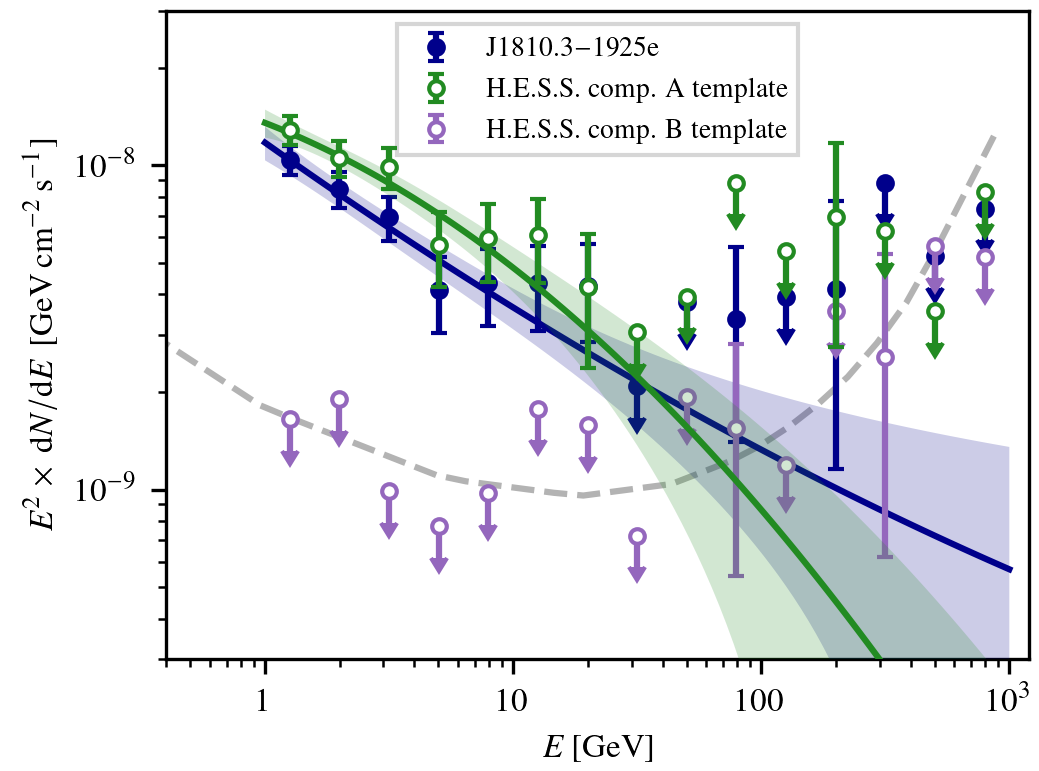
[PDF]
Flux points: (Errors contain statistical uncertainties and systematic uncertainties, see paper for details. Upper limits are at 95% confidence level.)
| |
Component A template |
Component A template |
Component A template |
Component B template |
Component B template |
Component B template |
| Energy [GeV] |
Energy Flux [GeV cm-2 s-1] |
Energy Flux Error Low [GeV cm-2 s-1] |
Energy Flux Error High [GeV cm-2 s-1] |
Energy Flux [GeV cm-2 s-1] |
Energy Flux Error Low [GeV cm-2 s-1] |
Energy Flux Error High [GeV cm-2 s-1] |
| 1.26 |
1.29e-08 |
1.31e-09 |
1.32e-09 |
< 1.65e-09 |
|
|
| 2 |
1.05e-08 |
1.33e-09 |
1.34e-09 |
< 1.9e-09 |
|
|
| 3.16 |
9.87e-09 |
1.41e-09 |
1.43e-09 |
< 9.87e-10 |
|
|
| 5.01 |
5.68e-09 |
1.47e-09 |
1.49e-09 |
< 7.73e-10 |
|
|
| 7.94 |
5.97e-09 |
1.6e-09 |
1.63e-09 |
< 9.76e-10 |
|
|
| 12.6 |
6.09e-09 |
1.75e-09 |
1.8e-09 |
< 1.78e-09 |
|
|
| 20 |
4.21e-09 |
1.84e-09 |
1.94e-09 |
< 1.58e-09 |
|
|
| 31.6 |
< 3.06e-09 |
|
|
< 7.22e-10 |
|
|
| 50.1 |
< 3.94e-09 |
|
|
< 1.93e-09 |
|
|
| 79.4 |
< 8.84e-09 |
|
|
1.55e-09 |
1.01e-09 |
1.27e-09 |
| 126 |
< 5.44e-09 |
|
|
< 1.19e-09 |
|
|
| 200 |
6.92e-09 |
4.17e-09 |
4.82e-09 |
< 3.54e-09 |
|
|
| 316 |
< 6.26e-09 |
|
|
2.56e-09 |
1.94e-09 |
2.78e-09 |
| 501 |
< 3.56e-09 |
|
|
< 5.63e-09 |
|
|
| 794 |
< 8.28e-09 |
|
|
< 5.21e-09 |
|
|
Figure 8
SEDs for leptonic model.
Figure 9
Measured and predicted radius of component A.
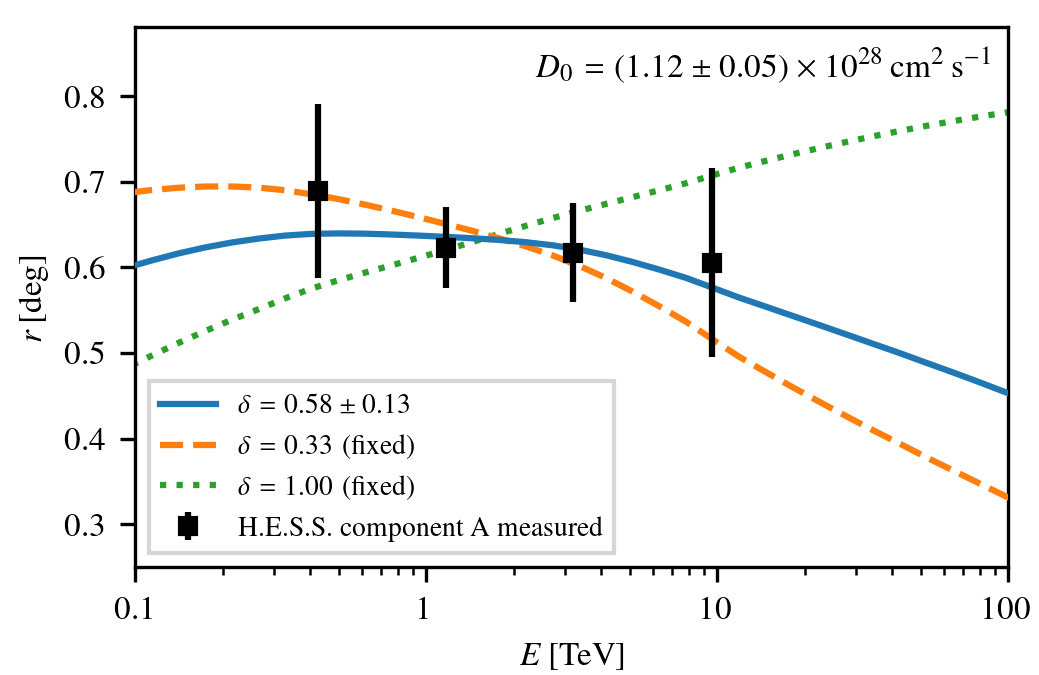
[PDF]
Figure 10
SED for hadronic model.
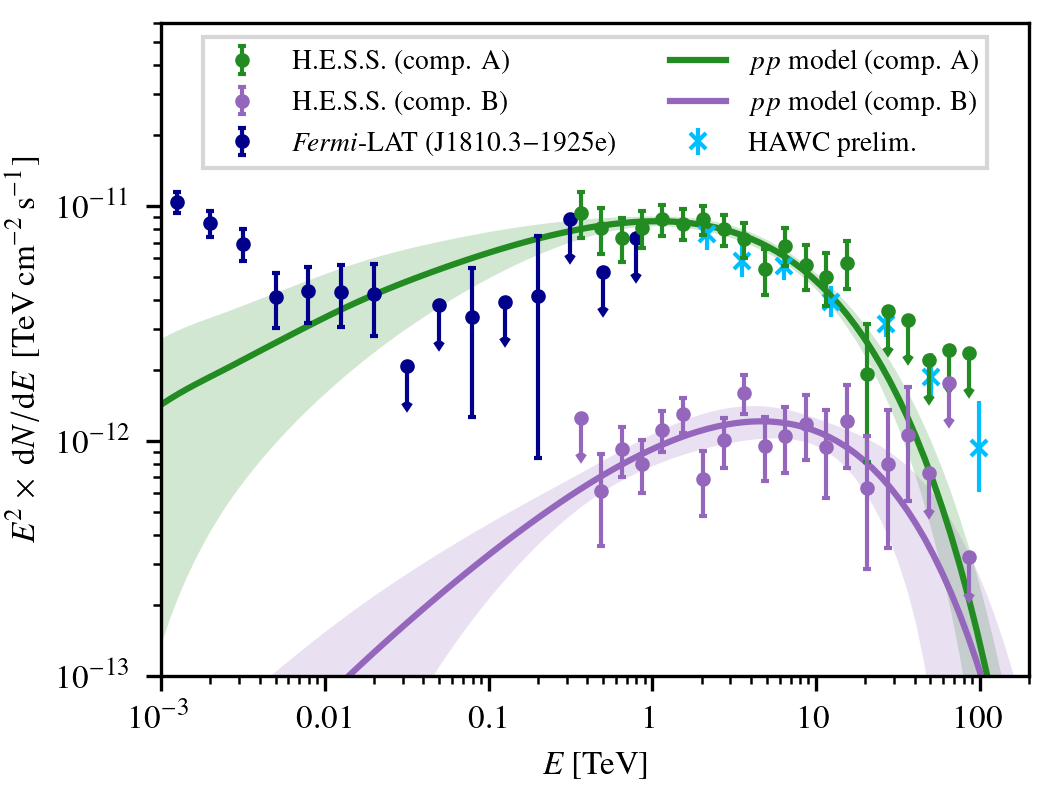
[PDF]
Figure A.1
Distributions of fitted background model parameters.
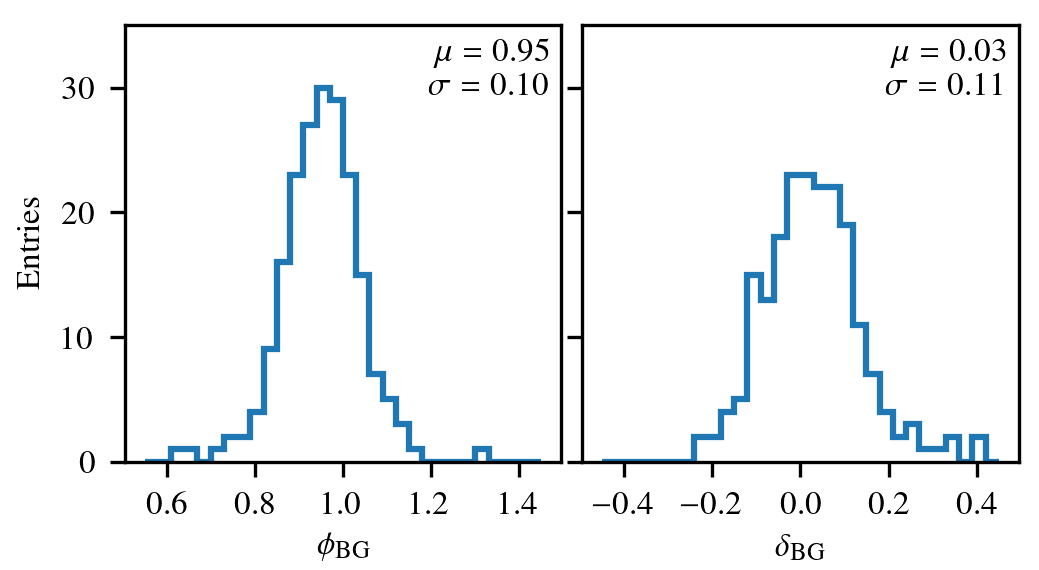
[PDF]
Figure A.2
Significance map after background model fit.
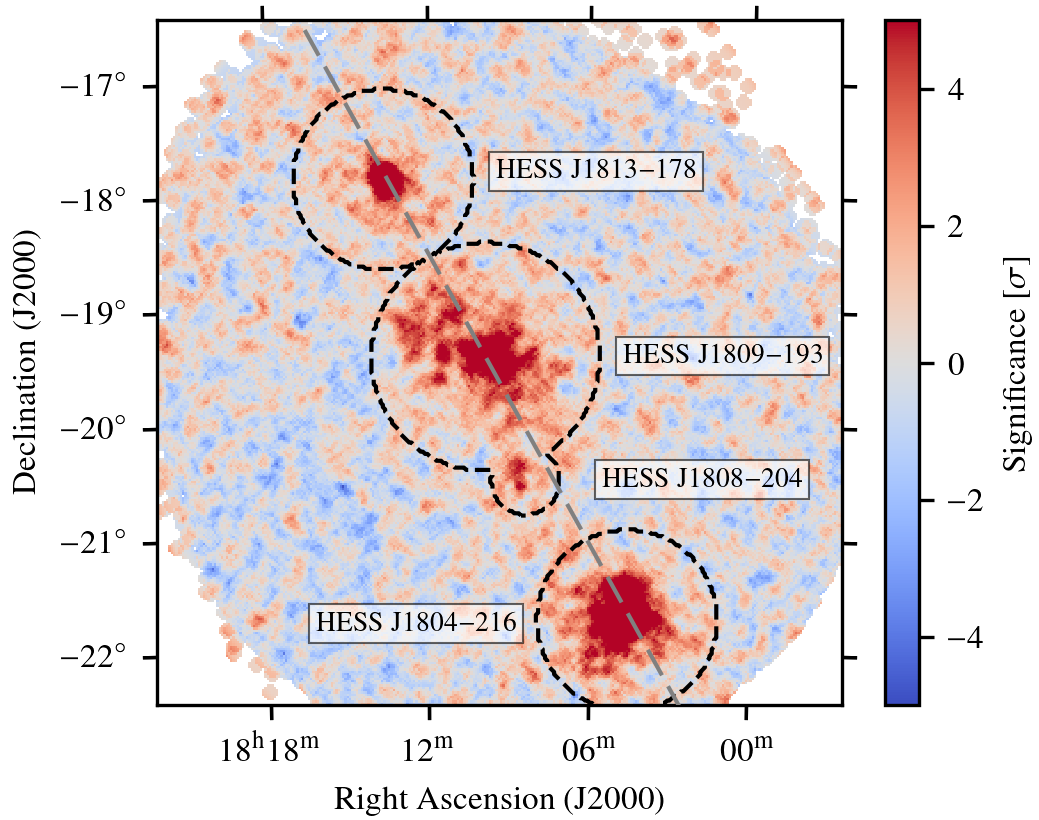
[PDF] [FITS]
Figure A.3
Significance distributions after background model fit.
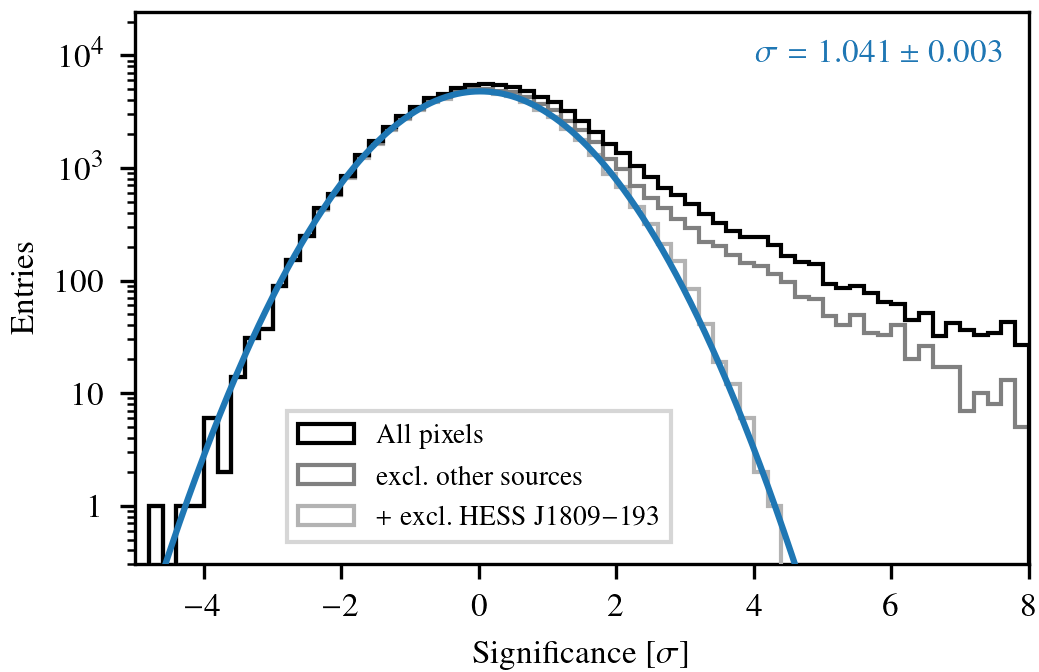
[PDF]
Figure B.1
Source parameter distributions including systematic effects.
Figure B.2
Correlations between source model parameters and systematic variation parameters.
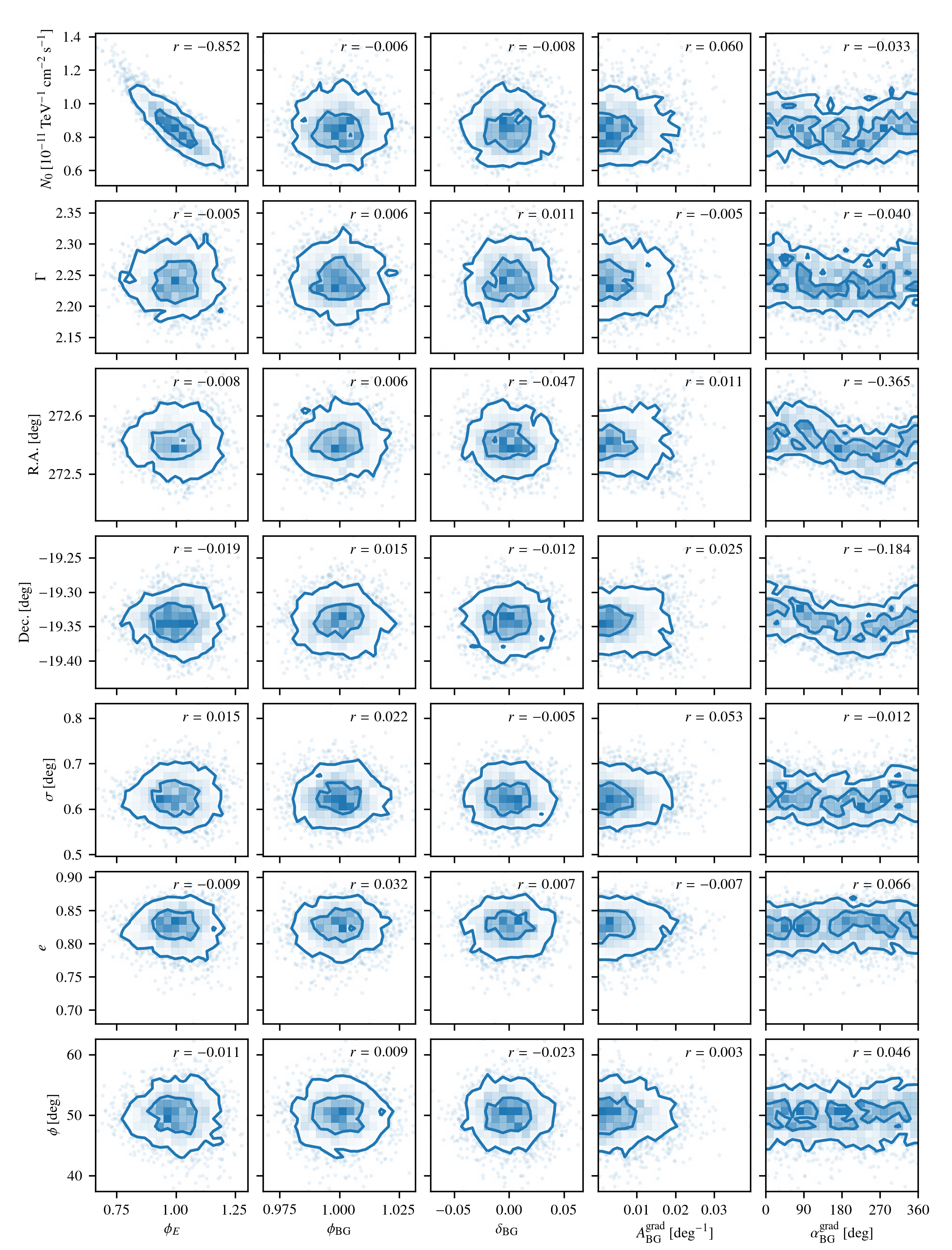
[PDF]
Figure C.1
Residual significance maps for 1-component model fitted in energy bands.
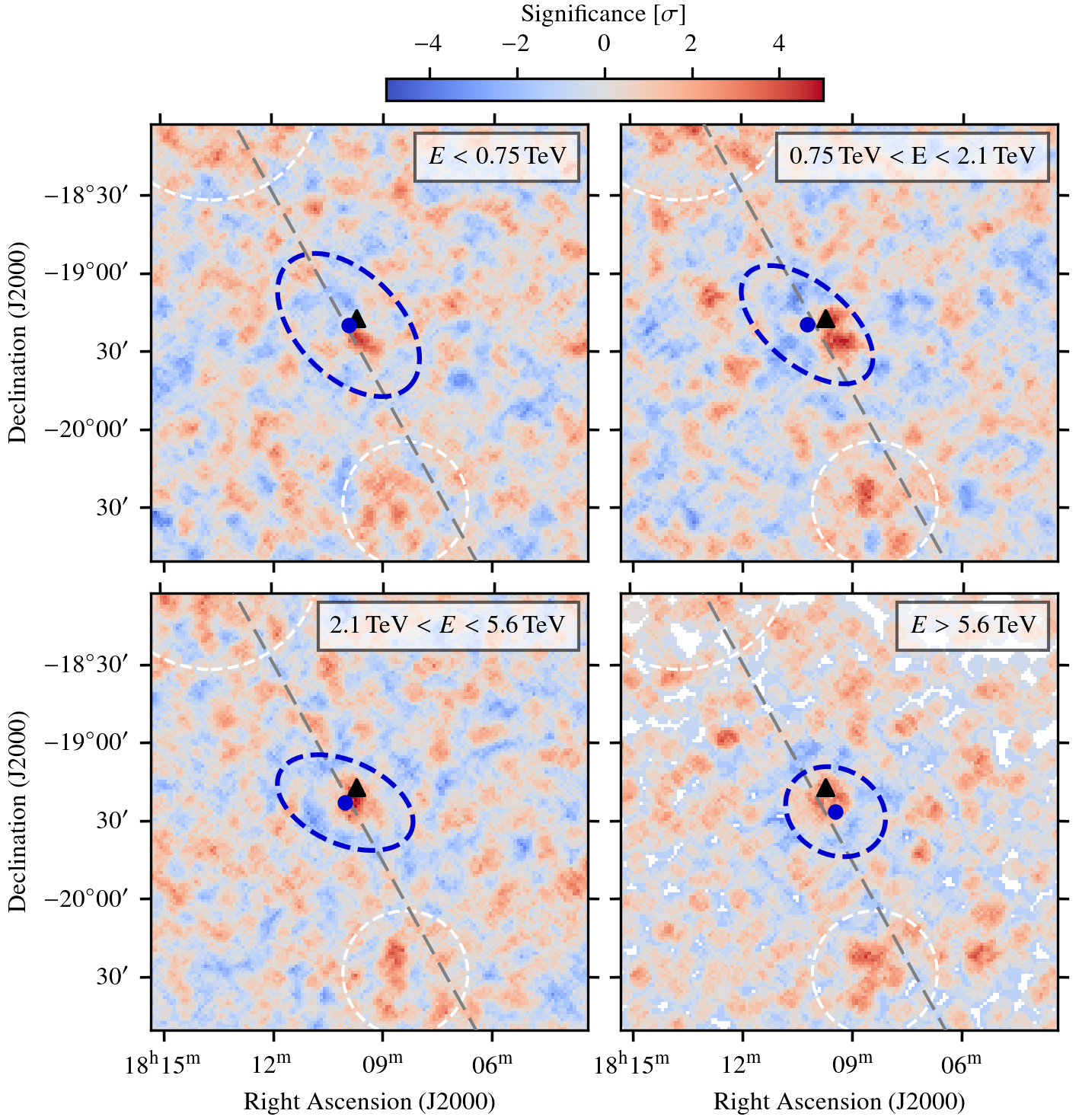
[PDF]
[FITS 1]
[FITS 2]
[FITS 3]
[FITS 4]
Figure C.2
Residual significance maps for broadband-fit of 2-component model.
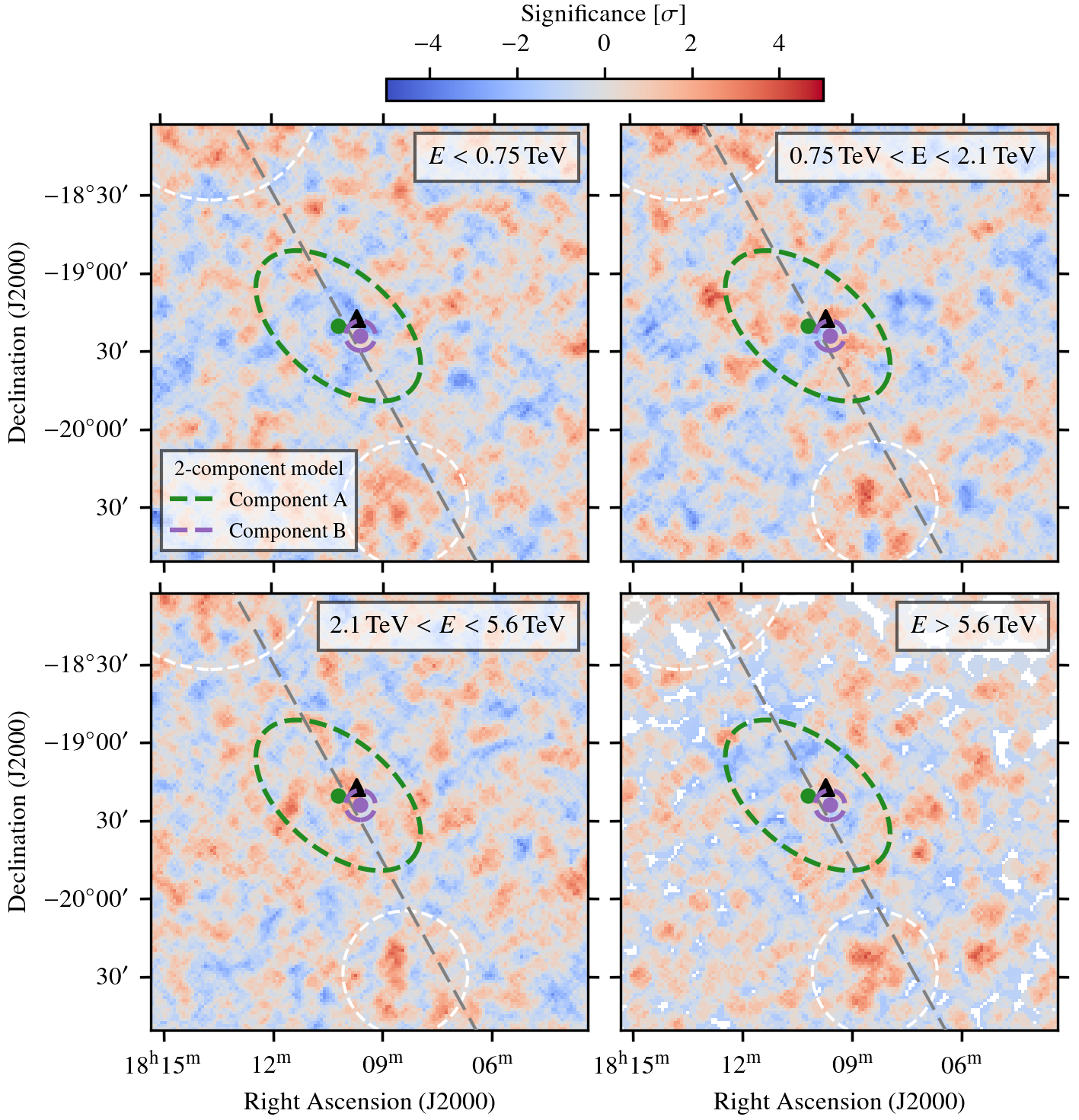
[PDF]
[FITS 1]
[FITS 2]
[FITS 3]
[FITS 4]
Figure C.3
Residual significance maps for 2-component model fitted in energy bands.
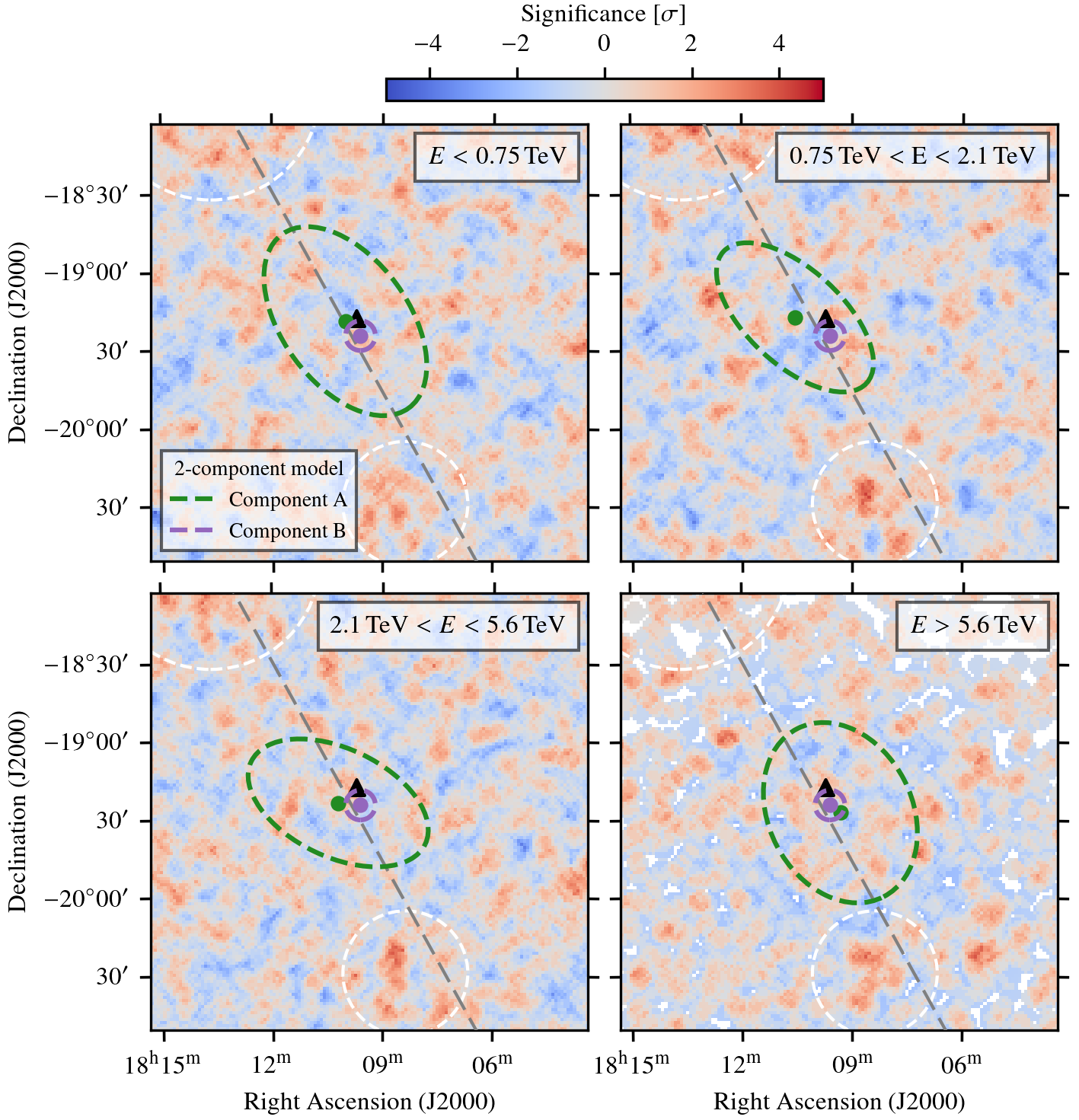
[PDF]
[FITS 1]
[FITS 2]
[FITS 3]
[FITS 4]
Collaboration Acknowledgement
The support of the Namibian authorities and of the University of Namibia in facilitating the construction and operation of H.E.S.S. is gratefully acknowledged, as is the support by the German Ministry for Education and Research (BMBF), the Max Planck Society, the German Research Foundation (DFG), the Helmholtz Association, the Alexander von Humboldt Foundation, the French Ministry of Higher Education, Research and Innovation, the Centre National de la Recherche Scientifique (CNRS/IN2P3 and CNRS/INSU), the Commissariat à l'Énergie atomique et aux Énergies alternatives (CEA), the U.K. Science and Technology Facilities Council (STFC), the Irish Research Council (IRC) and the Science Foundation Ireland (SFI), the Knut and Alice Wallenberg Foundation, the Polish Ministry of Education and Science, agreement no. 2021/WK/06, the South African Department of Science and Technology and National Research Foundation, the University of Namibia, the National Commission on Research, Science & Technology of Namibia (NCRST), the Austrian Federal Ministry of Education, Science and Research and the Austrian Science Fund (FWF), the Australian Research Council (ARC), the Japan Society for the Promotion of Science, the University of Amsterdam and
the Science Committee of Armenia grant 21AG-1C085. We appreciate the excellent work of the technical support staff in Berlin, Zeuthen, Heidelberg, Palaiseau, Paris, Saclay, Tübingen and in Namibia in the construction and operation of the equipment. This work benefited from services provided by the H.E.S.S. Virtual Organisation, supported by the national resource providers of the EGI Federation.
